RYAN ORR
Being a Dirt Rider motocross test bike is a hard knock. From the factory, these honored machines are thrown directly into the most intense testing fire in the industry, and our fleet of 2007 250Fs was especially beaten up. Sure, it gets its picture in the magazine, but for a bike, that doesn't go too far. Our bikes aren't treated like your new bike, either. In a lot of ways, we take better care of them, with a watchful eye on regular maintenance. But in other instances, our bikes are abused to no end. Having tortured them over multiple days of shootout testing, in which the engines are hot to the touch for six to eight hours, we can confidently claim we have decreased their little life spans. So when the idea came across the DR offices to challenge the world's most famous motocross race shop to build a solid race bike in a single work day, we knew where to start.We chose the 2007 Yamaha YZ250F for our project bike because, as a race bike, the little blue thumper is probably the most improvable with the simplest of modifications. With its mellow power delivery and tractable chassis, the stock YZ is hard to strongly dislike. It doesn't give a race-bike feel as other rockets out there do, and that hinders faster riders. But for most, a new stock YZ250F is adequate. The biggest complaints from our shootout test riders were a moderate-at-best turning feel and a slow-to-go power delivery (see our April '07 issue). With that said, it's important to note that our 250F was far from new. With 35 to 40 run-time hours under its belt-well over twice the service period for a top end replacement (not to mention a complete suspension servicing)-our blue bike was aching for a freshening. Enter Pro Circuit.This story is about more than just building a pretty bike. With the rise of four-strokes, the motocross public as a whole has mysteriously gotten lazy on performing regular top end maintenance. True, the new motors of today maintain power at higher levels longer than the old two-strokes of the past, but the importance of piston replacement is the same. You might not feel the power going away, but the more you milk a top end, the greater your chances become of rebuilding a scattered engine. Just as the valves need checking, top ends need servicing.The technicians behind the Pro Circuit empire were quick to accept our challenge. And when I showed up at 8:30 a.m. with our bike, it took them about 15 seconds to rip it out of my truck and start working. Service manager and race support guru Kevin Strikwerda and his crew immediately put the bike up on blocks and started the teardown. That was, until I stopped them and required a dyno run on the well-used bike for comparison. This is one of a thousand reasons why they probably hate me now.On the dyno, our stock Yamaha consistently pumped out 33.8 horsepower-a number that reflects the bike's age and coordinates exactly to how the bike felt on the track the day before it hit the shop. During that first test day, I rode the bike just like I did during the shootout: I adjusted the sag, set the clickers to our best settings and rode two tanks of fuel through it. At first, I was surprised by how solid the bike felt. But as the day wore on, I began to notice the sacked-out suspension and tired motor. It wasn't drastically lacking power for my speed, but I was clutching the crap out of it to get out of corners with authority and missing some confidence in the bumps and jump landings. It had definitely lost that solid race feel we all love.
After the dyno runs, Strikwerda and I took the bike back into the shop. There, the T-handles started twirling and didn't stop until 5:45 that evening. Pro Circuit has been on the map forever, and Mitch Payton's reputation and aggressive winning attitude precedes every piece of MX technology emblazoned with the globe logo. I was excited to see what they could do in a day, and they didn't fail to impress.Apart from the suspension, every part replacement, every modification and every setting on our stock-to-sweet bike was completed in front of me that day at the shop. We had an extra set of stock suspension sent in a few days earlier to get a head start. Strikwerda and technician Brian Radovich-who, interestingly, went through at least four cans of contact cleaner-worked like mad. In fact, everyone in the shop had a hand in the bike. Pro Circuit is a big machine with a lot of moving parts. At one point, Strikwerda was on the phone answering an exhaust question from a customer, holding a bike to dyno for one of his amateur racing teams, writing down jetting specs for a Honda and smiling while I took his photo. Meanwhile, Radovich was busy removing our worn piston while Josh Westhoff was in the corner changing tires and applying graphics, and Preston Egan was checking the valve seats and suction inside the torn-apart head. I counted at least seven people working on our bike at one point. This, of course, was while they worked just as hard on their customers' projects. The Pro Circuit shop isn't just on the gas-they're on race gas.As they worked their magic, I was amazed at how much time I had on my hands. So I tried to stay out of the way and observe the condition of all the old parts as they were disgorged out of the bike. The piston came out clean, as did the cylinder. The cross-hatching was still very visible, and there were no scratches on the surface or signs of piston slap. The valves on the motor were also still within spec, though a little tight in spots. The PC guys were set up to do a complete head job if necessary, but our bike was remarkably solid, so we just swapped the piston and rings for the Pro Circuit race piston and buttoned it back up. As we said earlier, we like our bike mods here at DR to be practical, reasonably priced and to have a significant impact on the motor's performance. We weren't looking for a fully built multithousand-dollar race motor with the life span of a gnat. We wanted stock reliability with that little extra push. In accordance with this attitude, Pro Circuit's jetting specs went into the carb, as did a full Ti-4 GP exhaust. As always, we kept it quiet with the company's 99-decibel tip in the muffler, which actually only blew 97.3 when tested at the Dirt Digger Hangtown amateur National. The PC staff assured us that was all we needed to get the power improvements we were looking for.The suspension was set up to be moderate as well. A revalve dialed to my weight and ability is more than adequate since I don't plan on hitting any supercross obstacles, ever.Those were the major modifications. Of course, all the little stuff (graphics, anodized bling, updated controls, a new drive system and a thorough cleaning of every nook and cranny) adds up to a very, very full day. I'm still amazed they got it done. It wasn't, however, without a headache or two.Before I loaded up and headed home with my brand-new bike, we had to do the "after" dyno run to see, on paper, what the improvements had done. Strikwerda did a parking-lot break-in, and we strapped the bike on the horsepower contraption to see what we could make. Then the problems started. The bike sounded great on the stand, but at about 8000 rpm, we developed a bad case of the cutouts and the motor would surge madly. The techs went to work again and deciphered that an electrical problem was definitely to blame.
First, we replaced the coil and spark-plug cap. Nothing. The bike still cut out.Then we replaced the stator. Nothing again. The bike still cut out.Then we put in a new spark plug. Nope.Then we swapped CDI boxes. Nada.Then Strikwerda said, "Let's unhook the kill switch since it's literally the last electrical component on the bike."The bike ran perfectly. We happily completed a series of dyno runs before regretfully telling everyone in the shop that the last half hour of work was the fault of a crappy kill switch.The good news was the bike gained 4 solid horsepower with minimal modifications and is now pumping out 38 ponies easily and regularly. Payton reminded us that a gain of more than 11 percent (which we now had) was nice and, back in the two-stroke days, would be hard to find without some aggressive, potentially unreliable motor tweaks. The new bike looked good on paper, but we had a date at the track to see if it could transfer those gains to the dirt.The very next day I returned the Pro Circuit bike to Competitive Edge MX Park. The Yamaha obviously looked better, as our photographer Adam Campbell couldn't believe it was the same bike. And, boy, did it run better! The YZ was definitely due for a rebuild, but even compared with the new stocker, the Pro Circuit bike pulls with a newfound torque down low. This pull was nowhere to be found in the original bike. The same electric smoothness is there, but now it has some meat to it. And the best part? It doesn't sacrifice any of the top-end. In fact, it seems that has improved as well. The Yamaha flies by more than all but the orange 250Fs out there and has a bottom and mid that can run with the yellows now. The race piston Pro Circuit sells is a slightly higher compression unit than the stocker is (about one-half point to 13:1; stock YZ250Fs are at 12.5:1). But the crew said pump gas is fine, and we love that. The motor will make more power with race fuel, but ours was jetted and ran clean and strong with 91-octane gas from the station.Pro Circuit suspension upgrades have consistently improved most bikes we've tested them on, and this YZ is no different. The biggest gain is in cornering, and that was realized by not just me but by our pro tester Ryan Orr as he followed me around the track. "I can't believe how good you're cornering that bike," he said more than once. That little lowering link from PC really gets the bike settled in the turns, something the stock YZ doesn't exactly do for me. Also contributing to the great ride were a new set of Bridgestone M403 front and M404 rear intermediate-terrain tires (expect us to talk a lot more about these new treads in upcoming tests as we wear out a few pairs), the PC triple clamp setup, a Renthal Twinwall 997 bar, Kevlar grips and the great gripper seat cover. All of these are an improvement over our stock parts.What else can we say? The boys at Pro Circuit pulled off our challenge with great results. And they showed that with a simple top end rebuild and an exhaust upgrade (while still hanging below 99 decibels), a tired bike can definitely wake up! Plus, it looks sweet now.Want to rebuild your bike from stock to sweet? Check out the list and pick out your favorites.
Make It Sweet
Pro Circuit race piston: $249.95
Pro Circuit Ti-4 GP system: $849.95
Pro Circuit fuel-mixture screw: $24.95
Pro Circuit hot-start connector: $24.95
Pro Circuit engine plug kit: $69.95
Pro Circuit clutch springs: $69.95
Pro Circuit throttle tube: $49.95
Pro Circuit clutch perch: $149.95
Pro Circuit axle block: $49.95
Pro Circuit clutch cover: $149.95
Pro Circuit racing graphics: $149.95
Pro Circuit bar mount (111/48 in.): $99.95
Pro Circuit top clamp: $199.95
Pro Circuit bottom clamp: $299.95
Pro Circuit linkarm: $184.95
D.I.D chain: $79.95
Renthal Twinwall handlebar: $119.95
Renthal Kevlar grips: $16.95
Renthal rear sprocket: $59.95
Bridgestone M403 front tire: $92.97
Bridgestone M404 rear tire: $116.42
Stock Yamaha clutch pack (total replacement): $102.16
1 liter Maxima Maxum4 Premium 10W-40 oil: $6.45Sweet From The Garage
Factory tuning, mail-order styleI can hear it now: "You Dirt Rider guys just walk into Pro Circuit and toss them a dirty dirt bike, come back a day later and off you go with a works machine and a mechanic to hold your hand in between riding it!" Yeah, it's true, but only for a story. Spoiled Jesse Ziegler had to stay with the bike and shoot photos instead of hanging out at the gym looking for the ladies as a proper rock star motocrosser would.So in the name of keeping it real, I ordered up a lot of the same parts from Pro Circuit, sat down in my garage, cracked open a room-temperature Pabst Blue Ribbon and reenacted the similar overhaul on our 2007 Kawasaki KX250F. I got the $249.95 piston kit, head and base gaskets, a pipe crush-gasket from Kawasaki (approximately $35), a $849.95 PC Ti-4 GP exhaust system and a PC billet throttle tube since JZ told me it was the best thing for making his YZ feel fresh again. I took one evening to tear everything apart, checking the valves on the 35-plus-hour engine, where everything was in spec. The next evening, I reassembled it. Total time for both days was four beers-or three hours-at a leisurely pace. I reinstalled the Leo Vince exhaust system since that is what I had been running. I felt best going one step at a time; I'd try the PC system later. I also picked up Pro Circuit's recommended jetting for the bike and an easily adjustable $24.95 PC fuel screw.At Glen Helen, I unloaded the bike and took it for a break-in spin. Immediately, I noticed the bike had a crisper feel at the throttle (and not from the throttle tube!) even with the standard jetting still in the bike. It had a more deliberate bottom torque and was still healthy in the midrange. The top seemed less impressive than before, but I'm sure it was mostly because the lower rev range was enhanced, making the step up less striking. Another rip at the track and I seconded my initial opinions, but I could tell that by changing the compression ratio, the bike was looking for better jetting.One thing I hate about modifying motors is the resultant jetting chores that come with it. And getting to this KX-F carb is a task. Luckily for me, Pro Circuit has done all the homework and has the right jetting for the bike. I removed the subframe, pulled the carb and swapped out the brass (see chart), which took about 45 minutes. Right away, the bike took another leap forward, cleaning up the bottom-end to a level that I didn't think was possible. It let the top-end come alive, too, showing me how important great jetting really is. I wouldn't have thought or been so concerned with the jetting after my first ride, but this made the stock setting seem bad, when it really wasn't.The last step was the swap to the PC Ti-4 exhaust. The Leo Vince system took the stock KX-F from unridable to second in class for me, and it performed well with the PC piston kit, keeping the smoother and more linear pull. But the addition of the PC pipe woke the bike up further, proving this exhaust was a well-matched ingredient to the package. The bike was just as smooth and only a little louder (still quieter than stock, especially at high rpm). It gave just that added boost while thankfully not making the bike pipey or aggressive, just strong. More right off the bottom and slightly more pull in the upper mid.Sound too good to be true? Well, it wasn't, because it still cost roughly $1200. That is the cost of properly increasing the performance of four-stroke 250s these days. Think about it: The KX-F still runs hard without detonating on 91-octane pump gas. And since Pro Circuit knows the right jetting for this setup, a chunk of the price was paid for right there. About the only thing I regret, besides watching Jesse get factory treatment while I sipped beers and slipped wrenches, was listening to him about the $49.95 throttle tube. I'd have rather replaced the clutch perch assembly for $149.95. It would have made my bike feel even tighter. Oh yeah, my sticker kit looks cooler than yours anyways, JZ. Wanna race?

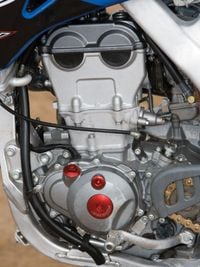
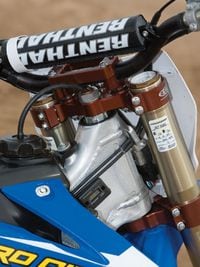
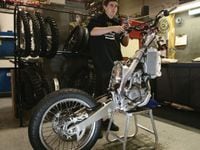
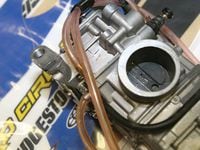
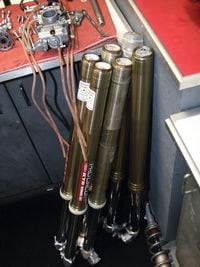


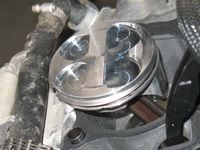
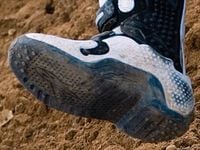


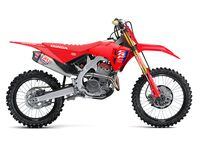
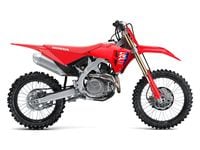

/cloudfront-us-east-1.images.arcpublishing.com/octane/H6JX3MZTERHZZPDWOCM3UZAN5U.jpg)





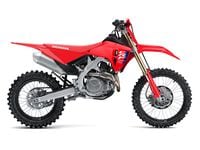
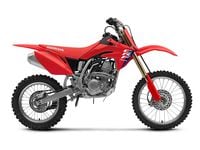

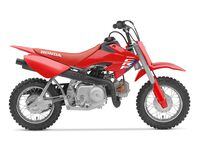
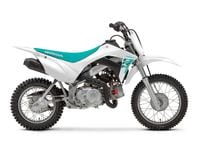
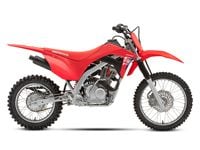
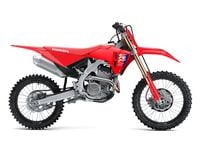
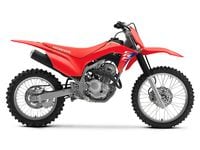
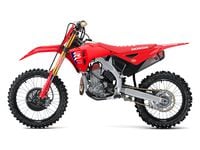


/cloudfront-us-east-1.images.arcpublishing.com/octane/F5VROCSFNRDXFHJQWP6AN5GMPI.jpg)
